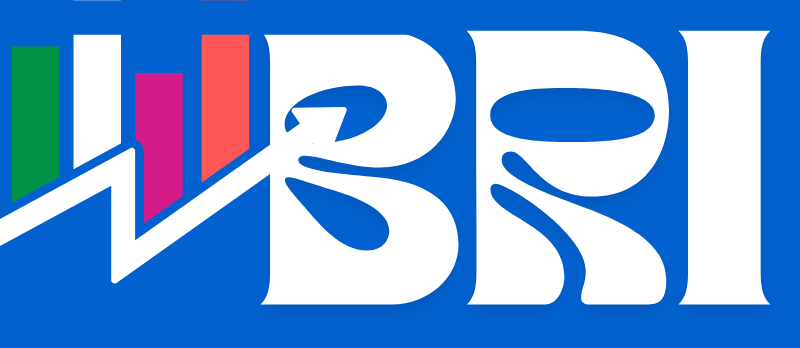
Swimwear & Beachwear Market Size
The global swimwear & beachwear market size was valued at USD 21.98 billion in 2025 and is expected to reach USD 38.01 billion by 2034, at a CAGR of 5.84% during the forecast period 2025-2034.
Swimwear & Beachwear Market Overview
The swimwear and beachwear market is witnessing robust growth globally, attributed to changing preferences among consumers, growing awareness regarding sustainability, and the increasing impact of digital marketing and social media globally.
With consumers increasingly aware of their environmental impact, they are looking for swimwear made with sustainable, eco-friendly materials, leading brands to respond by incorporating recycled fabrics, biodegradable textiles, and cutting-edge production processes.
Purchasing decisions are also increasingly influenced by ethical considerations like fair wages, responsible sourcing, and cruelty-free production, forcing brands to introduce greener and more transparent practices.
The rising power of social media platforms has started to play an integral role within the swimwear sector and has affected the adoption of trends much faster while improving brand visibility. The industry has entered a new era in which consumers discover and purchase swimwear online, where influencers, celebrities, and viral content influence buying behavior.
Through influencer-oriented marketing, the brands are utilizing advanced data transformation in this digital world by introducing AI-fitted fit assistants and AR-initiated virtual try-on features to innovate the online shopping platform. Personalized swimwear has gained ground, with swimwear consumers looking for unique styles tailored to their fashion palette.
Others include Bikini and Summersault.com, which feature mix-and-match designs, custom prints, and made-to-order swimwear, enabling customers to build one-of-a-kind pieces that are designed to fit their body type and aesthetic.
Greenwashing has become a bigger concern in the market. Other brands feign to be sustainable but do not fully incorporate eco-friendly practices, deceiving consumers who desire to produce ethically. Not having standardized regulations on sustainable swimwear, buyers have trouble recognizing the genuinely ethical swimwear brands from greenwashers.
In response, businesses need to commit to these principles through transparent sustainability reporting, third-party certifications, and circular economy systems that promote garment recycling or diminish waste production.
Implementing blockchain or QR code tracking means brands have the opportunity to provide granular insights into their supply chain, wherein the consumer can trace the accuracy of any sustainability claims and make informed purchasing decisions.
Beyond sustainability, technology is influencing product innovation within the swimwear sector. However, smart swimwear, especially in fitness and swim events, is growing fast. Swimwear worn for high performance is already embedded with sensors this swimwear offers UV protection and hydrodynamic compression features to optimize athletic performance.
Speedo, Arena, and TYR are among the leading brands introducing swimwear technology that optimizes motion, maximizes speed, and presents increased durability. Other brands offer smart swimwear made from temperature-sensitive fabrics that change color when exposed to UV allergens, alerting the wearer when they have been in the sun too long and indicating when it is time to leave or apply sunblock. Such an integration not only improves utility but also meets the demands of customers looking for superior swimwear for professional and recreational usage.
Based on end users, the swimwear & beachwear market is segmented by men, women, and kids. The women’s segment in the swimwear & beachwear market has the largest market share as compared to the men’s and kids’ segments.
Dominance in the area is mostly backed by an increase in consumer spending on ultra-modern swimwear, variety in styles & designs, and the influence of social media on purchasing behavior. Women’s swimwear offers a wide variety of products in various styles, such as bikinis, one-piece swimsuits, tankinis, rash guards, and monokinis, to suit different looks and body types.
The growing emphasis on body positivity and size inclusivity has also broadened the women’s swimwear market. Brands are introducing extended sizing and body-enhancing designs and enabling swimwear to reach a wider consumer base.
The global swimwear and beachwear market is dominated by North America, as it accounts for the highest market share in the global swimwear and beachwear market. High consumer spending on premium swimwear, luxury and designer swimwear brands, and a strong swimming culture in the United States and Canada drive the global demand for swimwear. Scuba diving, which includes swimming, beach outings, swimming with fitness in resorts, etc., has also contributed significantly to the demand.
The region remains attractive due to the healthy presence of retail infrastructure, whereby swimwear brands are expanding their footprint among physical stores and e-commerce platforms to target various customer segments.
Beach tourism has been another factor influencing North America’s swimwear acquisition, as places like Florida, California, Hawaii, Cancun, and Los Cabos are all prone to high amounts of swimwear purchases.
Increasing customer demand for multipurpose swimwear that can be worn from the beach to a casual outfit has additionally strengthened North America’s leadership in the market as brands are creating multifunctional designs that can be worn in and out of the water. Sustainable swimwear is also growing in popularity in this region due to eco-conscious consumers demanding biodegradable fabrics, plant-based dyes, and ethically produced swimwear.
Report Scope
| Feature of the Report | Details |
| Market Size in 2025 | USD 7,112.36 Million |
| Projected Market Size in 2034 | USD 7,735.58 Million |
| Market Size in 2024 | USD 7,002.41 Million |
| CAGR Growth Rate | 8.15% CAGR |
| Base Year | 2024 |
| Forecast Period | 2025-2034 |
| Key Segment | By Type of Financing, Industry Vertical, Company Size, Deployment Model, Integration and Region |
| Report Coverage | Revenue Estimation and Forecast, Company Profile, Competitive Landscape, Growth Factors and Recent Trends |
| Regional Scope | North America, Europe, Asia Pacific, Middle East & Africa, and South & Central America |
| Buying Options | Request tailored purchasing options to fulfil your requirements for research. |
BRI has comprehensively analyzed the global swimwear & beachwear market. We have provided a detailed explanation of the market’s driving forces, restraints, challenges, opportunities, and key trends. Segment-wise market size and market share during the forecast period are duly addressed to portray the probable picture of this global swimwear & beachwear industry.
The competitive landscape includes key innovators, aftermarket service providers, market giants, and niche players. These are studied and analyzed extensively concerning their strengths, weaknesses, and value addition prospects. In addition, this report covers key player profiling, market shares, mergers and acquisitions, consequent market fragmentation, new trends, and dynamics in partnerships.
List of the prominent players in the Swimwear & Beachwear Market:
- Arena S.p.A
- Nike Inc.
- Beach Bunny Swimwear
- Boardriders Inc. (Quiksilver Roxy Billabong)
- Adidas AG
- Calvin Klein
- PVH Corp. (Tommy Hilfiger Calvin Klein)
- TYR Sport Inc.
- Gottex
- Perry Ellis International Inc.
- Speedo International Ltd.
- Rip Curl
- Seafolly
- Calzedonia
- Raq Apparel
- Youswim
- Alulu Swimwear
- Bokumaia
- Saint Somebody
- Andie Swim
- Others
The Swimwear & Beachwear Market is segmented as follows:
By Product Type
- Swimwear
- Beachwear
By End-User
- Men
- Women
- Kids
Regional Coverage:
North America
- U.S.
- Canada
- Mexico
- Rest of North America
Europe
- Germany
- France
- U.K.
- Russia
- Italy
- Spain
- Netherlands
- Rest of Europe
Asia Pacific
- China
- Japan
- India
- New Zealand
- Australia
- South Korea
- Taiwan
- Rest of Asia Pacific
The Middle East & Africa
- Saudi Arabia
- UAE
- Egypt
- Kuwait
- South Africa
- Rest of the Middle East & Africa
Latin America
- Brazil
- Argentina
- Rest of Latin America
[embedsocial_reviews id=”d4ae80cffae3d938f997111953699a733c8e6f99″]
